Bagwere People and their Culture in Uganda
Who are the Bagwere People in Uganda? The Gwere people, or Bagwere, are a Bantu ethnic group in Uganda. The Bagwere constitute an estimated 4% of Uganda's population.
They live in the eastern Uganda, mostly in Budaka District, Pallisa District and Kibuku District, where they make up over 80% of the population.
They have the Bagisu, the Basoga, the Balamogi and the Iteso, the Banyole and the Jopadhola (Badama) as their neighbors.
The city of Mbale, one time reputed to be the cleanest city in Uganda is home to some Bagwere.
Bagwere are also found in the following towns in Eastern Uganda: Pallisa, Budaka, Kibuku, Kagumu, Kamonkoli, Kadama, Iki-Iki, Bulangira, Kaderuna, Tirinyi,Butebo and Kakoro.
The Bagwere are said to have emigrated to their present area from Bunyoro and Toro, and travelled along Lake Kyoga, crossing River Mpologoma. For this reason all the tribes that settled along the shores Kyoga like; Baluli, Bakenye, Balamogi have a similar language to Lugwere.
Their initial area of settlement has shrunk considerably as the Iteso and the Bagisu have pushed the Bagwere's frontiers inwards.
The history or the Bagwere
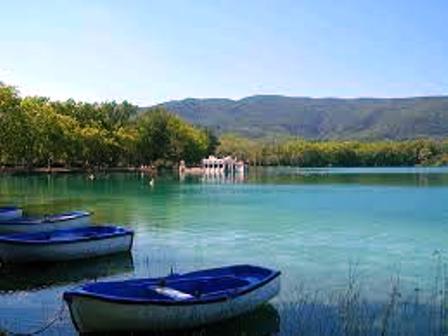 lake kyoga
lake kyogaThe Bagwere are said to have emigrated to their present area from Bunyoro and Toro, and travelled along Lake Kyoga, crossing River Mpologoma.
For this reason all the tribes that settled along the shores Kyoga like; Baluli, Bakenye, Balamogi have a similar language to Lugwere. Their initial area of settlement has shrunk considerably as the Iteso and the Bagisu have pushed the Bagwere’s frontiers inwards.
Their traditions say that they moved from Bunyoro following the disintegration that accompanied the arrival of the Luo and the collapse of the Bachwezi dynasty.
There language and their supposed connection with Bunyoro presuppose that the Bagwere are a Bantu group. Their area of origin may thus be Katanga region of Central Africa like other Bantu.
Cultural structure
The Bagwere have many clans including the following:
Bagema Clan, Bakaduka clan, Baloki Clan, Balalaka Clan, Baikomba Clan, Bakomolo Clan, Balangira Clan, Baganza Clan, Badaka Clan, Baumo Clan, Banaminto Clan, Bapalama Clan,Banyekero Clan, Batoloyi Clan, Bambirwe Clan
Bagwere Economic activities
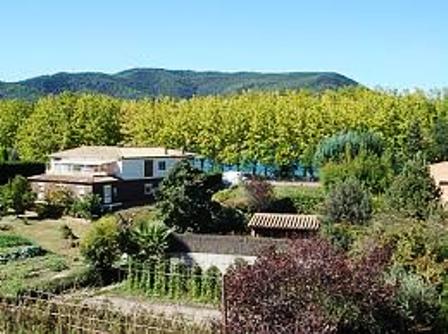 Bagwere Economic activities
Bagwere Economic activities
The main economic activity of the Bagwere is subsistence crop agriculture and animal husbandry. To a lesser extent, fishing, fish farming and bee keeping are increasingly practiced in Pallisa District. The major crops include:
Cassava, Millet, Sorghum, Maize, Groundnuts, Beans, Peas, Sweet potatoes, Rice, Cotton, Sunflower, Soybeans, Bananas, Matooke
Cattle, goats, sheep, poultry, pigs, are some of the animals raised in the district. The district is further blessed with nine (9) minor lakes that comprise part of the Lake Kyoga system. The following are the nine lakes: Lake Lemwa, Lake Kawi, Lake Nakwa, Lake Meito, Lake Geme, Lake Omunuo, Lake Nyanzala, Lake Nyaguo
There are nine (9) stocked fish farms in the district. Fish farming offers a big potential to increase the supply of fish for the population and hence improve on the nutrition of the population. Fish species include:
Birth traditions of the Bagwere.
Whenever a woman was pregnant, she was not supposed to look at the nest of a bird calledNansungi. It was believed that if the woman looked at the nest she would miscarry.
After giving birth, the woman was not supposed to leave the home. She was given banana leaves to sleep on. Custom demanded that she could not eat form her husband’s clans until her days of confinement were over.
During this time, she could eat form neighbors or in her parents’ home. She was required to eat bananas that were cooked unpeeled and if the piece of banana broke in the process of peeling or eating, she was not supposed to eat it.
Besides the woman was not supposed to look at the sky before the umbilical cord broke off.
Death traditions of the Bagwere.
If one died, people would weep and wail loudly. If some one did not cry or cried lightly, he could be easily suspected of having had a hand in the death.
If the deceased man was an old man, the people could move singing and mourning and tour the immediate neighbors and on to the well, to take away the spirit of the dead. Normally, the body could not spend two days in the house before being buried.
Corpses used to be buried with a needle or mweroko, a small stone used for grinding, to fortify the corpse against body hunters.
It was believed that if the body hunters called upon the corpse to come out of the grave it would reply that it was busy either sewing or grinding, whatever the case may be.
Language traditions of the Bagwere.
The language of the Bagwere is Lugwere. It widely spoken in Pallisa District and in Pallisa town. The language is very similar to Lunyoleand to Lusamia.
Cultural structure
The Bagwere have many clans including the following:
§ Bagema Clan
§ Bakaduka clan
§ Baloki Clan
§ Balalaka Clan
§ Baikomba Clan
§ Bakomolo Clan
§ Balangira Clan
§ Baganza Clan
§ Badaka Clan
§ Baumo Clan
§ Banaminto Clan
§ Bapalama Clan
§ Banyekero Clan
§ Batoloyi Clan
§ Bambirwe Clan
Intermarriage among members of the same clan is prohibited, as is the custom in most bantu cultures
Music
Their traditional music is called Tongoli, a five stringed hand held instrument, modeled along a one string instrument elsewhere in Africa known as the Kora. The Bagwere are also identified with namadu, a set of seven drums as one of the famous traditional musical instruments. However, with the modernisation of the music industry, there are young upcoming artist in Bugwere who are manoeuvering to breakthrough to the top
Marriage traditions of the Bagwere.
There are a number of marriage traditions exclusive to this tribe. The issue of bride price, is for instance, handled differently from most other African tribes. Although bride price is important even among the Bagwere, it is not a must to pay it upfront like is the case among most of Ugandas tribes.
"As long as the boy can afford to offer the girls parents assistance, especially financial, whenever they need it, a young Bagwere couple is usually given the chance to develop their home first and pay the agreed bride price later," Namugosa explains.
For his wife, Asuman paid five cows, five goats, five cocks and some cash, which as far as he understood was a 'fine. According to Namugosa, however, traditionally bride price consists of 2 cows, 2 goats and a substantial amount of cash.
"The cash is supposed to pay for a replacement of the labour lost when the girl moves to another family. Today, it also pays for the investment the parents have made in their daughter, usually in the form of education." This explains Asumans "fine".
Among the Bagwere, young couples are fully involved in the process of finding their spouse, a task usually left to the boys parents in most other African traditions. Sometimes among the Bagwere,
however, there are a few special cases where two fathers agree that their children marry to cement the friendship existing between the two families. "Even then, the children have to agree to marry when they grow up," explains Namugosa. "Every boy identifies a girl they want to marry and informs her of his intentions before they can speak to her parents."
Namugosa says that up to the stage when the parents negotiate the bride price, the boy undertakes all the initial preparations (like the first visit to the girls family, usually alone or with a few male friends of his own age).
After the girl has agreed to marry the boy, he tells his parents about it so that they can assist him put together some requirements for when he introduces himself to the parents of his intended bride. "For that first introduction ceremony, I took things like salt, sugar, saucepans, etc" admits Baluku.
With the first introduction ceremony out of the way, the boys family now sends an invitation to the girls parents to attend the bride price negotiations. It is with this invitation that the money for paying for the girl is sent. It is important to note here again that the Bagwere differ from most Ugandan tribes in that it is the girls parents who visit the boys family to conduct the bride price negotiations.
Among the majority of Ugandan tribes (including the Baganda, Banyoro, Acholi Japadhola, Banyankole among others), bride price negotiations are held at the girls home.
During the bride price negotiations (which may involve some haggling), the parents from both sides agree on the bride price and the day it shall be paid. When the bride price is paid, the marriage is as good as sealed. Weddings parties among the Bagwere, even to this day are considered a luxury that only the financially able engage in.
"When the boy pays the bride price, he also states on what day he wants his wife to come home permanently." Namugosa says. "It is only when the young couple feels like they have the means to throw a wedding party that they indulge in this practice. Other wise, what matters most is agreeing on the bride price," Namugosa says.
Elopement among the Bagwere.
There have been cases where a girl disappears from her family, only for her parents to receive a message from another family saying the daughter is with living their son and inviting them for bride price negotiations. In this case, a fine must be paid by the boy for 'stealing their daughter.
This was in many cases, an avenue for a poor boy to express his commitment to his choice of a girl for marriage. "This usually happens when the boy comes from a very poor family and he suspects that his chosen wife-to-bes parents will not accept him readily'
Also, if the girl is not so committed to the boy to the level of defying her parents, her father may simply fetch her from the boys family instead of coming for bride price negotiations," says Namugosa.
More about Afican Culture
Kenya Art |
Kenya Festivals |
Kenya Gender Issues |
Kenya Gestures |
Kenya Greetings |
Kenya History |
Kenya Language |
Kenya Literature |
Kenya Modern Culture |
Kenya Music |
Kenya National Anthem |
National Dress Cord of Kenya |
Kenya People |
Kenya Respect |
Kenya Taboos |
Kenya Television and Culture |
Recent Articles
-
Garam Masala Appetizers ,How to Make Garam Masala,Kenya Cuisines
Sep 21, 14 03:38 PM
Garam Masala Appetizers are originally Indian food but of recent, many Kenyans use it. Therefore, on this site, we will guide you on how to make it easily. -
The Details of the Baruuli-Banyara People and their Culture in Uganda
Sep 03, 14 12:32 AM
The Baruuli-Banyala are a people of Central Uganda who generally live near the Nile River-Lake Kyoga basin. -
Guide to Nubi People and their Culture in Kenya and Uganda
Sep 03, 14 12:24 AM
The Nubians consist of seven non-Arab Muslim tribes which originated in the Nubia region, an area between Aswan in southern
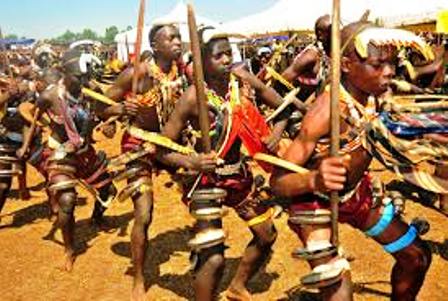
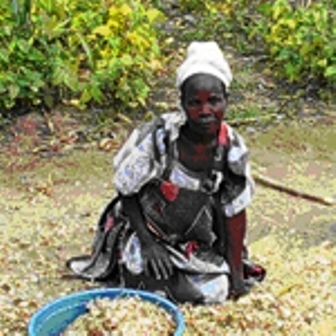
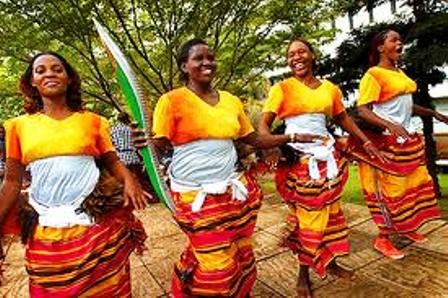







New! Comments
Have your say about what you just read! Leave me a comment in the box below.